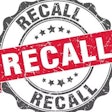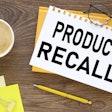
In the US, petfood labeling is stipulated by the Association of American Feed Control Officials Model Regulations for Pet Food and Specialty Pet Food. The models are constantly evolving, with often at least an amendment or two every year. So on January 17, AAFCO, in cooperation with the Pet Food Institute and the American Feed Industry Association, sponsored a day-long Pet Food Labeling Workshop in St. Pete Beach, Florida, USA.
Attended by state feed control officials and industry, the workshop went through the basics of all aspects of labeling, including product names, ingredient declarations, guarantees, nutritional adequacy statements and much more. It is my understanding that AAFCO intends to eventually put a copy of the workshop presentations on its website.
Overall, the workshop did a great job in explaining petfood labeling as currently stipulated. Progress was also made in proposals to modify two aspects of labeling at the AAFCO “mid-year” meeting held immediately after the workshop.
Specialty petfood guarantees. AAFCO’s Model Legislation and Regulation Committee passed amendments that would change the way specialty petfood (e.g., for rodents, birds, reptiles, fish) and supplement labels declare guarantees for vitamins and minerals. Instead of following the regulations for livestock feed as currently required, guarantees would need to follow the order and units the same as for cat food products.
For example, iron would need to be declared in milligrams per kilogram (mg/kg) instead of parts per million (ppm), and vitamin A would be in international units per kilogram (IU/kg) rather than international units per pound (IU/lb). Further, specialty petfood labels would no longer have to declare guarantees such as minimum and maximum salt, which, while arguably helpful on a poultry or swine feed label, are of minimal usefulness to an owner of a hamster or budgie. However, a guarantee for minimum sodium could be added voluntarily. See Figure 1 for an example of how labeling may need to be changed.
The amendments to the specialty petfood guarantee requirements are expected to be passed by the full AAFCO membership at the annual meeting in August 2011. Because it will take considerable time and effort for manufacturers to implement changes and replace old labeling, a note to appear in the next AAFCO Official Publication will recommend that specialty petfood manufacturers be given until January 2013 before enforcement of the new regulations.
Calorie content statements. After over five years of deliberation, AAFCO’s Pet Food Committee passed final language on an amendment that would, in part, mandate all dog and cat food, treat and supplement labels to bear calorie content statements. Currently, only labels bearing “lite” and “less calories” claims are required to include calorie information.
Other changes include a requirement to state calories in terms of both kilocalories per kilogram and per familiar measure or unit or product (e.g., cans, cups, pieces) and a requirement to more clearly differentiate the means of determination (“calculated” vs. “fed”). The committee deleted a provision that would have allowed for some exceptions from these requirements.
On the other hand, the amendment modified the type and quantity of data needed for manufacturers to calculate calories and eliminated the requirement for a stated fed value to be within 15% of the calculated value. These changes make it less complicated for companies to comply and regulators to verify. (Find the proposed changes to the regulation here.)
The amendment must now go to the Model Legislation and Regulation Committee for review in August. Assuming it passes that committee as well, it must then go to the full AAFCO membership for a final vote, the earliest possible in 2012. A likely grace period to accommodate label changes may mean it would not be enforced for years after that.
In other label-related matters, AAFCO voted in changes to the model regulations pertaining to livestock feeds that would allow for claims related to dietary starch, sugars and/or fructan content. Basically, claims are allowed as long as the label bears appropriate maximum guarantees and advises professional intervention with respect to proper feeding. Regulations to allow similar claims on petfood labels are still in development but are likely to take a form akin to those already established for calorie- and fat-related claims.
The Food and Drug Administration Amendments Act of 2007 mandates, in part, that the agency promulgate federal regulations to specifically address petfood labeling. Currently, FDA regulations only address basic aspects of animal feed labeling, without many of the specifics contained in the AAFCO Models. FDA may propose regulations in a form similar to existing AAFCO Models, or it may propose an entirely new regulatory rubric. A proposal in the Federal Register is expected soon, according to FDA.



















